Related Research Articles
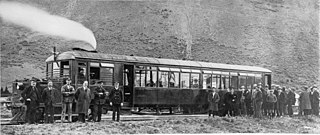
The NZR RM class Clayton steam rail motor was a unique railcar that was operated by New Zealand Railways (NZR) for New Zealand's national rail network and one of only two steam railcars to operate in New Zealand - the other being 1925's RM class Sentinel-Cammell.

The NZR RM class Edison battery-electric railcar was a railcar that ran in Canterbury, New Zealand for eight years. It was built for New Zealand Railways (NZR) as a prototype for battery-electric railcars. While the railcar, classified "RM 6", was considered the first successful railcar in New Zealand, it was later destroyed in a fire, and battery-electric traction for railcars was not developed further in New Zealand. Two other classes of battery-electric locomotives were introduced about the same time as RM 6, the E class of 1922 and the EB class of 1925.
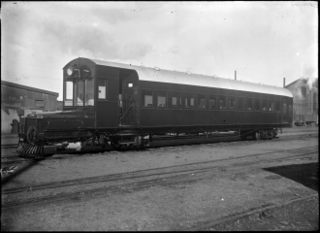
The NZR RM class Leyland petrol railcar was an experimental railcar built and trialled in New Zealand in 1925 by New Zealand Railways (NZR). It should not be confused with the two much smaller Leyland diesel railbuses of 1936.

The NZR RM class Midland railcar was the first successful railcar, and first diesel-powered vehicle, to enter revenue service in New Zealand. Two were built, RM 20 and RM 21, and they ran for five years from 1936 to 1941 before being replaced by larger Vulcan railcars. They operated primarily on the Midland Line and the Greymouth-Hokitika portion of the Ross Branch

The NZR RM class McEwan Pratt petrol rail motor was the first rail motor to run on New Zealand's national rail network, though it was never used in revenue service. It was built in 1912 at a time when the New Zealand Railways Department (NZR) was seeking alternative methods of providing rural passenger transportation. "Mixed" trains that carried both passengers and freight were typical on country branch lines as there was not sufficient traffic to justify a separate passenger train, but the schedule delays caused by loading and unloading freight during the journey made the mixed trains undesirable.

The NZR RM class Model T Ford railcar was a type of rail motor that operated on New Zealand's national rail network. Only two were built, classified as RM 4 and RM 5, and they were experimental railcars designed in an attempt to offer improved passenger services on quiet country branch lines that served regions with small populations.
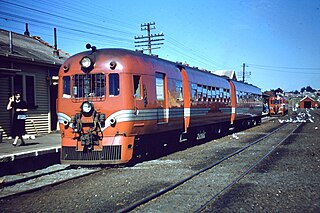
The NZR RM class 88-seaters were a class of railcar used in New Zealand. New Zealand Government Railways (NZR) classed them RM , the notation used for all railcars, numbering the 35 sets from RM100 to RM134. They were the most numerous railcars in NZR service. Their purchase and introduction saw the demise of steam-hauled provincial passenger trains and mixed trains.
The Endeavour was a long-distance passenger train service between Wellington and Napier in the North Island of New Zealand. The service was modelled on the Southerner service in the South Island, and operated from 1972 to 1989.
This is a list of jargon commonly used by railfans and railway employees in New Zealand.

The New Zealand EW class locomotive was a type of electric locomotive used in Wellington, New Zealand. The classification "EW" was due to their being electric locomotives allocated to Wellington. For two decades until the advent of the DX class they were the most powerful locomotives in New Zealand.

The New Zealand DG and DH class locomotive were a type of diesel-electric locomotives in operation on New Zealand's rail network from 1955-1983, built by English Electric.

The New Zealand DM/D class electric multiple unit were a type of electric multiple units used on the suburban rail network of Wellington, New Zealand. Formed of DM power cars and D trailer cars, the first units were ordered from English Electric in 1936 and introduced on 2 July 1938 operating the electrified Johnsonville Line service. Additional units were ordered in 1942 for the line, and in 1946 as the other Wellington suburban lines were to be electrified.
The Northerner was an overnight passenger train between Wellington and Auckland in New Zealand. The train replaced the unnamed and ordinary express trains supplementing the luxury Silver Star, which had replaced the Night Limited in 1971. The Northerner operated from 1975 to 2004.

The NZR RM class Wairarapa railcar was a class of railcars on New Zealand's national rail network. They entered service in 1936 and were classified RM like all other classes of railcars in New Zealand; they came to be known as the "Wairarapa" class as they were designed to operate over the famous Rimutaka Incline to the Wairarapa region on the Wairarapa Line. They also acquired the nickname of "tin hares" in New Zealand railfan jargon. The first two to be introduced re-used the numbers RM 4 and RM 5 that had previously been used by the withdrawn experimental Model T Ford railcars. The class consisted of six passenger railcars and one passenger-freight railcar. It is often described incorrectly as a class of six railcars.
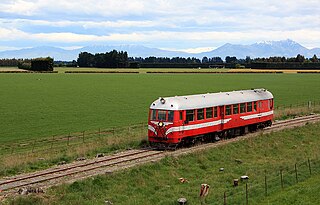
The NZR RM class Vulcan railcars were operated by the New Zealand Government Railways (NZR) in the South Island of New Zealand. All New Zealand railcars are classified as RM , and this class derived their nomenclature from the name of the manufacturer, the Vulcan Foundry of Britain.
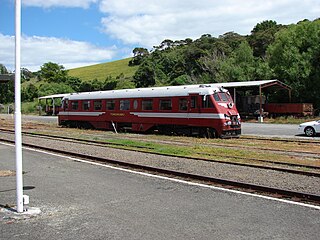
The NZR RM class Standard railcars were a class of railcar operated by the New Zealand Railways Department (NZR) in the North Island of New Zealand. Officially classified as RM like all other railcar classes in New Zealand, they acquired the designation of "Standard" to differentiate them from other railcar classes. They were introduced in 1938 and withdrawn in 1972.
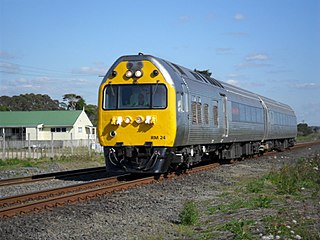
The RM class was the classification used by the New Zealand Railways Department (NZR) and its successors gave to most railcars and railbuses that have operated on New Zealand's national rail network. "RM" stands for Rail Motor which was the common name at the turn of the 20th century for what became known in New Zealand as railcars. As many types of railcars are operated, class names have been given to each railcar type to differentiate them from others.
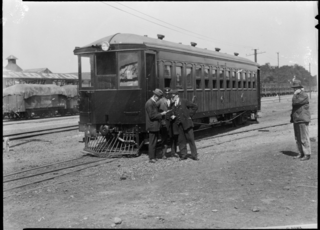
NZR A 88 was a railway passenger carriage converted into the Buckhurst petrol carriage railcar in 1924. It was the only railcar operated by NZR not designated as a member of the NZR RM class; while a railcar, it retained the designation of A 88. This designation was wholly unrelated to the steam locomotive A class of 1873 or A class of 1906.
The Petone Workshops were a government-owned railways maintenance and repair facility located in Petone, in Lower Hutt in the Wellington region of New Zealand's North Island. It took over construction and maintenance of rolling stock in the Wellington region from the Pipitea Point facility, starting in 1876, and became the only such facility in the region from 1878 until the opening of the replacement Hutt Workshops facility in 1929.

The NZR RM class Thomas Transmission railcar was an experimental electro-mechanical railcar operated by the New Zealand Railways Department (NZR). It was introduced to service in 1916 and therefore was one of the earliest railcars to operate in New Zealand.
References
- 1 2 3 4 5 6 David Jones, Where Railcars Roamed: The Railcars which have Served New Zealand Railways (Wellington: Wellington Tramway Museum, 1997), 4.
- 1 2 Robin Bromby, Rails That Built A Nation (Wellington: Grantham House, 2003), 122-3.
- ↑ Jones, Where Railcars Roamed, 8.
- ↑ "First Motor Train". Auckland Star. 3 July 1914. p. 2. Retrieved 10 May 2018.
